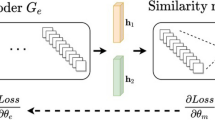Abstract
Intelligent transportation systems (ITS) such as hybrid electric vehicles make use of sensing technologies to improve mobility, safety and efficiency. Automated manual transmission (AMT) is a mechatronic device consisting of Internet of Things (IoT)-enabled sensors and actuators responsible for automatic gear shifting in hybrid electric vehicles. Any failure in these sensors or actuators can affect the normal operation of vehicles. Therefore, this study aims to discuss the characteristics of AMT when it breaks down and its impact on the whole hybrid electric vehicle system. Firstly, this paper briefly introduces the relevant overview of hybrid electric vehicles and AMT. Next, analytical redundancy analysis is used to find out the possible faults of each part of AMT and the causes of each fault. The normal and faulty signals are then passed to a reduced depth kernel extreme learning machine (RDK-ELM) algorithm, which combines the deep learning network structure with the kernel-based selection of support vectors from the training samples. The RDK-ELM is a fault diagnosis algorithm that classifies the normal and faulty signals, which represent whether the sensor is faulty or not. Simulation results show that the algorithm has high classification accuracy of 97.12% and it requires less time for training the model.





Similar content being viewed by others
Data Availability
The data used to support the findings of this study are available from the corresponding author upon request.
References
Sanguesa JA, Torres-Sanz V, Garrido P, Martinez FJ, Marquez-Barja JM (2021) “A Review on Electric Vehicles: Technologies and Challenges,” Smart Cities, vol. 4, no. 1, Art. no. 1, Mar. https://doi.org/10.3390/smartcities4010022
Yang C, Zha M, Wang W, Liu K, Xiang C (2020) Efficient energy management strategy for hybrid electric vehicles/plug-in hybrid electric vehicles: review and recent advances under intelligent transportation system. IET Intel Transport Syst 14(7):702–711. https://doi.org/10.1049/iet-its.2019.0606
Qin G, Ge A, Li H (2004) “On-Board Fault Diagnosis of Automated Manual Transmission Control System,” IEEE Transactions on Control Systems Technology, vol. 12, no. 4, pp. 564–568, Jul. https://doi.org/10.1109/TCST.2004.825133
Hofman T, Ebbesen S, Guzzella L (Jul. 2012) Topology optimization for Hybrid Electric Vehicles with Automated Transmissions. IEEE Trans Veh Technol 61(6):2442–2451. https://doi.org/10.1109/TVT.2012.2196299
Frank PM (May 1990) Fault diagnosis in dynamic systems using analytical and knowledge-based redundancy: a survey and some new results. Automatica 26(3):459–474. https://doi.org/10.1016/0005-1098(90)90018-D
Huang G-B, Zhu Q-Y, Siew C-K (2006) “Extreme learning machine: Theory and applications,” Neurocomputing, vol. 70, no. 1, pp. 489–501, Dec. https://doi.org/10.1016/j.neucom.2005.12.126
Wei S, Ma N, Su J, Deng W, “A Motor Fault Detection Method Based on Optimized Extreme Learning Machine (2021),” in Advances in Artificial Systems for Medicine and Education IV, Z. Hu, S. Petoukhov, and M. He, Eds., in Advances in Intelligent Systems and Computing. Cham: Springer International Publishing, pp. 315–324. https://doi.org/10.1007/978-3-030-67133-4_29
Suthar V, Vakharia V, Patel VK, Shah M (2023) “Detection of Compound Faults in Ball Bearings Using Multiscale-SinGAN, Heat Transfer Search Optimization, and Extreme Learning Machine,” Machines, vol. 11, no. 1, Art. no. 1, Jan. https://doi.org/10.3390/machines11010029
Lim J-Y, Ji P-S (2016) Development of Fault diagnosis algorithm using correlation analysis and ELM. Trans Korean Inst Electr Eng P 65(3):204–209. https://doi.org/10.5370/KIEEP.2016.65.3.204
Lu F, Jiang J, Huang J, Qiu X (Dec. 2017) Dual reduced kernel extreme learning machine for aero-engine fault diagnosis. Aerosp Sci Technol 71:742–750. https://doi.org/10.1016/j.ast.2017.10.024
Liang R, Chen Y, Zhu R (2022) “A Novel Fault Diagnosis Method Based on the KELM Optimized by Whale Optimization Algorithm,” Machines, vol. 10, no. 2, Art. no. 2, Feb. https://doi.org/10.3390/machines10020093
Li B, Rong X, Li Y (2014) “An Improved Kernel Based Extreme Learning Machine for Robot Execution Failures,” The Scientific World Journal, vol. p. e906546, Apr. 2014, https://doi.org/10.1155/2014/906546
Avci D (2016) An automatic diagnosis system for Hepatitis Diseases based on genetic Wavelet Kernel Extreme Learning Machine. J Electr Eng Technol 11(4):993–1002. https://doi.org/10.5370/JEET.2016.11.4.993
Xia J, Yang D, Zhou H, Chen Y, Zhang H, Liu T, Heidari AA, Pan Z (Feb. 2022) Evolving kernel extreme learning machine for medical diagnosis via a disperse foraging sine cosine algorithm. Comput Biol Med 141:105137. https://doi.org/10.1016/j.compbiomed.2021.105137
Liu Z, Hao J, Yang D, Tahir GA, Pan M (2022) “A Novel Reformed Reduced Kernel Extreme Learning Machine with RELIEF-F for Classification,” Computational Intelligence and Neuroscience, vol. p. e4795535, Mar. 2022, https://doi.org/10.1155/2022/4795535
Deng W-Y, Ong Y-S, Zheng Q-H (Apr. 2016) A fast reduced Kernel Extreme Learning Machine. Neural Netw 76:29–38. https://doi.org/10.1016/j.neunet.2015.10.006
Hinton GE, Osindero S, Teh Y-W (2006) “A fast learning algorithm for deep belief nets,” Neural Computation, vol. 18, no. 7, pp. 1527–1554, Jul. https://doi.org/10.1162/neco.2006.18.7.1527
Tamilselvan P, Wang P (2013) Failure diagnosis using deep belief learning based health state classification. Reliab Eng Syst Saf 115:124–135. https://doi.org/10.1016/j.ress.2013.02.022
Usman M, Jan MA, Jolfaei A (2020) SPEED: a deep learning assisted privacy-preserved framework for intelligent transportation systems. IEEE Trans Intell Transp Syst 22(7):4376–4384
Beard RV (1971) “Failure accomodation in linear systems through self-reorganization.,” Thesis, Massachusetts Institute of Technology, Accessed: May 16, 2023. [Online]. Available: https://dspace.mit.edu/handle/1721.1/16415
Acknowledgements
The paper did not receive any financial support.
Author information
Authors and Affiliations
Corresponding author
Ethics declarations
Competing Interests
Declares that he has no conflict of interest.
Additional information
Publisher’s Note
Springer Nature remains neutral with regard to jurisdictional claims in published maps and institutional affiliations.
Rights and permissions
Springer Nature or its licensor (e.g. a society or other partner) holds exclusive rights to this article under a publishing agreement with the author(s) or other rightsholder(s); author self-archiving of the accepted manuscript version of this article is solely governed by the terms of such publishing agreement and applicable law.
About this article
Cite this article
Liu, H., Ke, F., Zhang, Z. et al. Fault Tolerance in Electric Vehicles Using Deep Learning for Intelligent Transportation Systems. Mobile Netw Appl (2023). https://doi.org/10.1007/s11036-023-02168-w
Accepted:
Published:
DOI: https://doi.org/10.1007/s11036-023-02168-w




